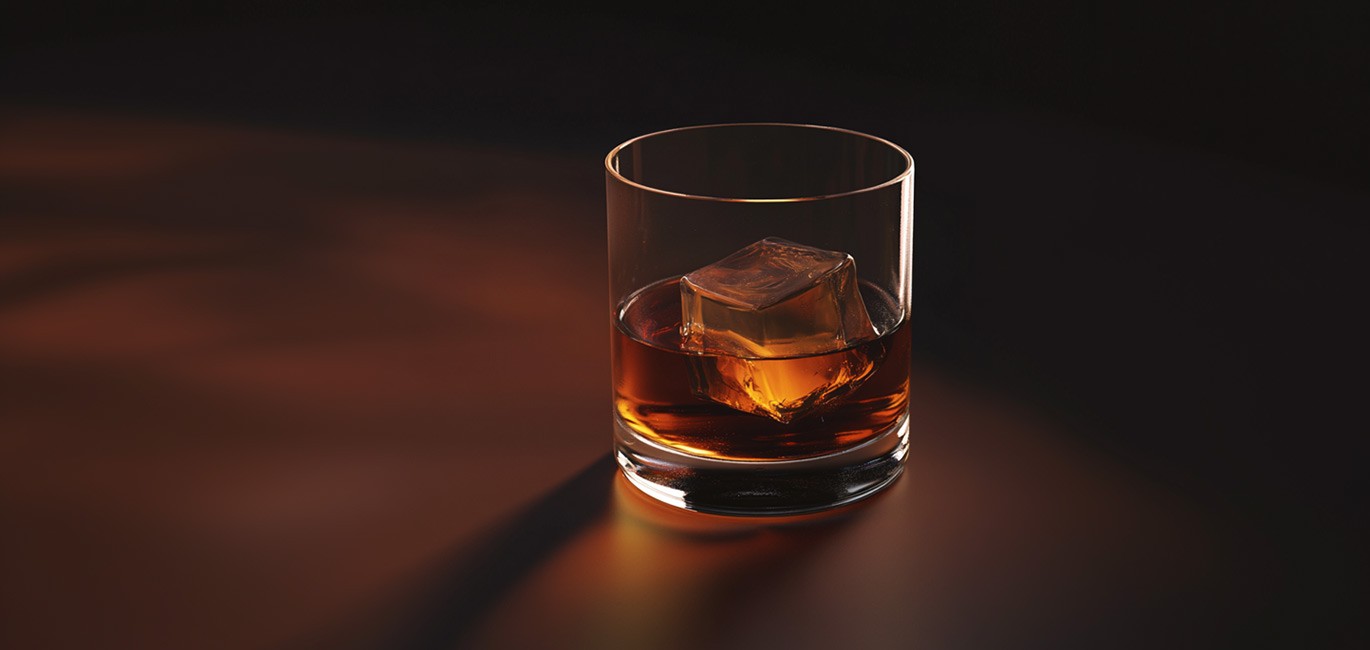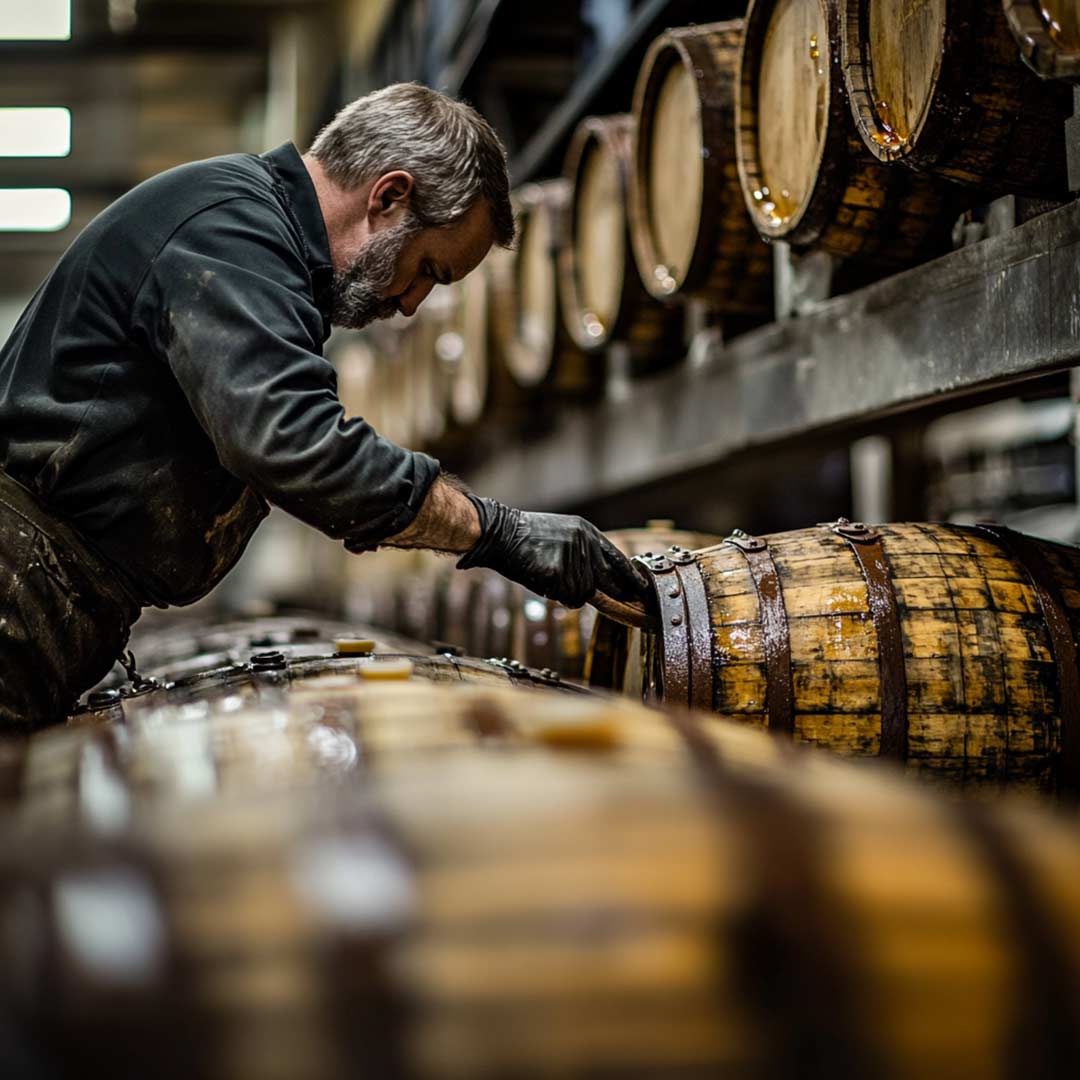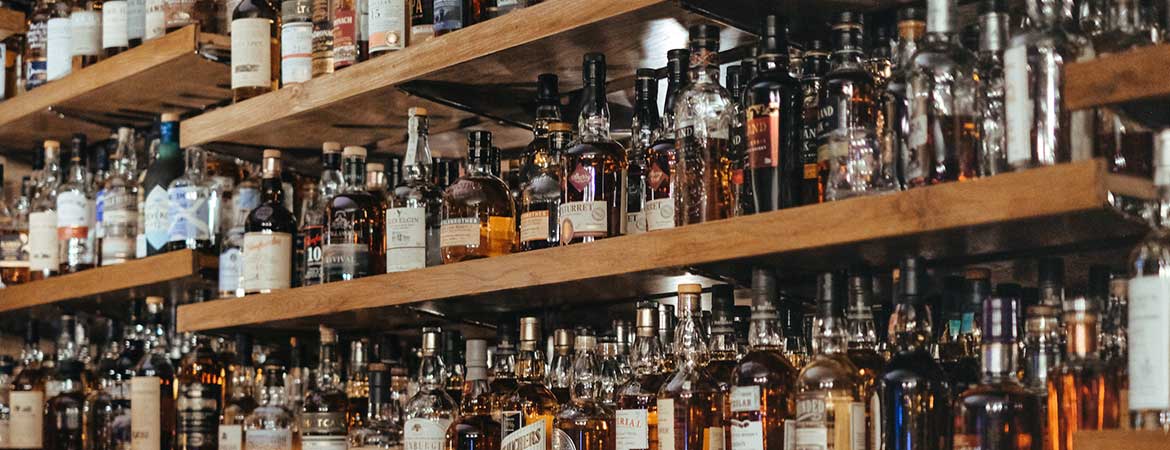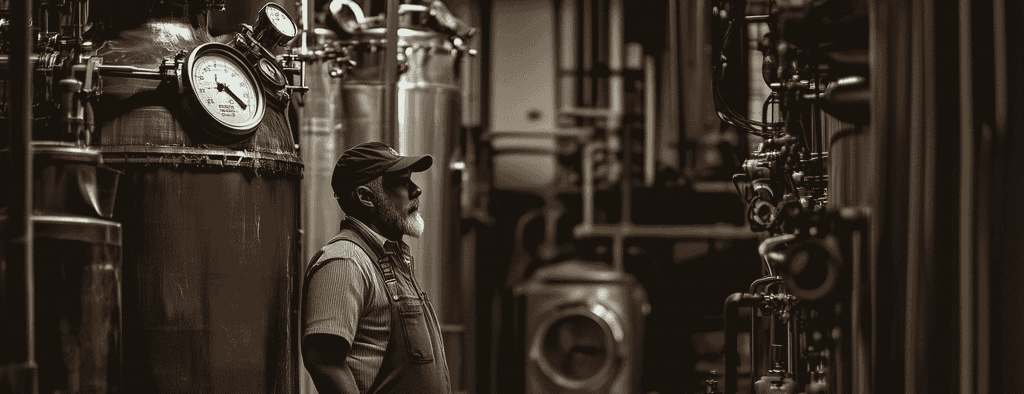Key Takeaways
Bourbon's main flavor characteristics: Bourbon typically offers notes of vanilla, caramel, oak, and spice, with a smooth, warming finish.
Factors influencing bourbon's taste: Aging duration, mash bill composition, barrel char level, and storage conditions all contribute to bourbon's flavor profile.
How to taste bourbon: Sip slowly, letting the bourbon coat your tongue. Gradually breathe in through your mouth to enhance flavor perception.
How does bourbon taste?
Bourbon typically offers a balanced combination of sweet and spicy flavors. The sweetness comes primarily from its high corn content, imparting notes of caramel, vanilla, and honey. In contrast, the spiciness, often contributed by rye, can present as peppery or cinnamon-like, adding complexity and depth to the flavor.
Bourbon's taste can also include hints of fruitiness, such as cherry or apple, and woody notes from the charred oak barrels in which it is aged. These layers of flavors make bourbon a versatile and richly nuanced spirit.
The Core Flavors of Bourbon
Flavors found in bourbon typically include:
Sweetness: Predominantly from corn, presenting as caramel, vanilla, honey, or toffee.
Spiciness: Typically from rye, manifesting as pepper, cinnamon, or nutmeg.
Fruity Notes: Hints of cherry, apple, pear, or citrus, depending on the distillation and aging process.
Woody/Oaky: Derived from the charred oak barrels, offering flavors like vanilla, oak, and sometimes smoky or toasted notes.
Nutty/Chocolatey: Subtle undertones of nuts or dark chocolate can also be present, adding to the complexity.
Floral/Herbal: Some bourbons exhibit floral or herbal nuances, which can be attributed to the specific yeast strains used during fermentation.
The flavors in bourbon can vary significantly based on the type of bourbon and the specific methods used in its production. Different types of bourbon can highlight specific flavor notes more prominently, providing a diverse range of tasting experiences.
Traditional Bourbon: This type typically has a balanced flavor profile, with a good mix of sweetness from the corn and spiciness from the rye. It often features strong vanilla and caramel notes from the oak aging process.
High-Rye Bourbon: Bourbons with a higher rye content will have more pronounced spicy and peppery flavors, alongside the traditional sweetness. These can also exhibit notes of cinnamon and clove.
Wheated Bourbon: In wheated bourbons, wheat replaces rye, resulting in a smoother and softer flavor profile. The sweetness is often more pronounced, with hints of honey and butterscotch.
Single Barrel Bourbon: This bourbon comes from a single barrel, leading to unique flavor characteristics. It can have a wide range of flavors depending on the specific barrel, often resulting in a richer and more complex taste.
Small Batch Bourbon: Made from a small, carefully selected batch of barrels, this type often has a well-rounded flavor profile. It balances the sweetness, spice, and other nuanced flavors effectively.
Cask Strength Bourbon: Bottled straight from the barrel without dilution, this bourbon has a higher alcohol content and more intense flavors. It often showcases deep, rich notes of oak, caramel, and spice.
These variations allow bourbon enthusiasts to explore and enjoy a broad spectrum of tastes, making the journey through different types of bourbon a continuously rewarding experience.
What is bourbon?
Bourbon is a type of American whiskey made primarily from corn, which must constitute at least 51% of its grain mixture.
This grain mix, or mash bill, can also include malted barley, rye, or wheat. The requirements for bourbon to be made are stringent, ensuring its distinct and consistent flavor profile.
To qualify as bourbon, it must be aged in new charred oak barrels, which impart unique flavors and characteristics to the spirit, such as notes of vanilla, caramel, and oak. Bourbon must be distilled to no more than 160 proof (80% alcohol by volume(ABV) and entered into the barrel for aging at no more than 125 proof (62.5% alcohol by volume). The final product must be bottled at a minimum of 80 proof (40% alcohol by volume).
The aging requirements for bourbon vary, usually ranging from 2-4 years or longer. In particular, straight bourbon whisky must be aged for 2 years (minimum), while bottled in bond bourbon must be aged for 4 years, with the additional requirements that it must be the product of one distillation season, one distillery, and one distiller.
How to taste bourbon
Here are a few steps you can follow when tasting bourbon to help you fully appreciate its taste:
Appearance: Observe the color and clarity of the bourbon. A darker color usually indicates a longer aging period.
Aroma: Swirl the bourbon in the glass and take a deep inhale. Notice the different scents such as vanilla, caramel, spices, or fruit.
Taste: Take a small sip and let it coat your mouth. Identify the primary flavors like sweetness, spiciness, and any fruity or woody notes.
Finish: Pay attention to the aftertaste. A long finish may suggest a well-aged bourbon, and you might detect lingering flavors.
Flavors in Bourbon vs Other Types of Whiskey
Understanding the flavor differences between bourbon and other types of whiskey can enhance your appreciation for each unique spirit. The production methods, ingredients, and aging processes of each type contribute to their distinct taste profiles. Here’s a comparison of bourbon's flavors with those of other popular whiskey types.
Bourbon
Scotch Whisky
American Whiskey
Japanese Whisky
Irish Whiskey
South African Whisky
Primary Flavors
Sweetness (caramel, vanilla, honey), Spiciness (pepper, cinnamon), Fruity Notes (cherry, apple), Woody/Oaky (vanilla, oak)
Smoky/Peaty, Malty, Fruity (apple, pear), Nutty, Earthy
Varied (can include notes of caramel, vanilla, spice, oak), depends on the specific type (rye, Tennessee whiskey)
Delicate, Light, Fruity (apple, pear), Floral, Slightly Smoky
Light, Smooth, Sweet (honey, vanilla), Fruity (apple, citrus), Malty
Varied (can include notes of fruit, spice, oak), often influenced by the climate
Key Characteristics
Made from at least 51% corn, aged in new charred oak barrels, predominantly produced in the USA.
Typically made from malted barley, often aged in used oak barrels, produced in Scotland, known for its peaty flavor.
Includes different styles like rye whiskey, Tennessee whiskey, made from various grains, aged in new or used oak barrels.
Modeled after Scotch whisky, often blended for a balanced flavor, known for its precision and craftsmanship.
Typically triple-distilled, made from a mix of malted and unmalted barley, aged in used oak barrels, known for its smoothness.
Made from various grains, aged in oak barrels, produced in South Africa, often reflects the unique terroir.
Best bourbons for beginners
For those new to bourbon whiskey, starting with approachable flavors and lower proofs is key. Look for bourbons between 80-90 proof (40-45% ABV) to ease into the rich world of this classic American spirit without overwhelming your palate.
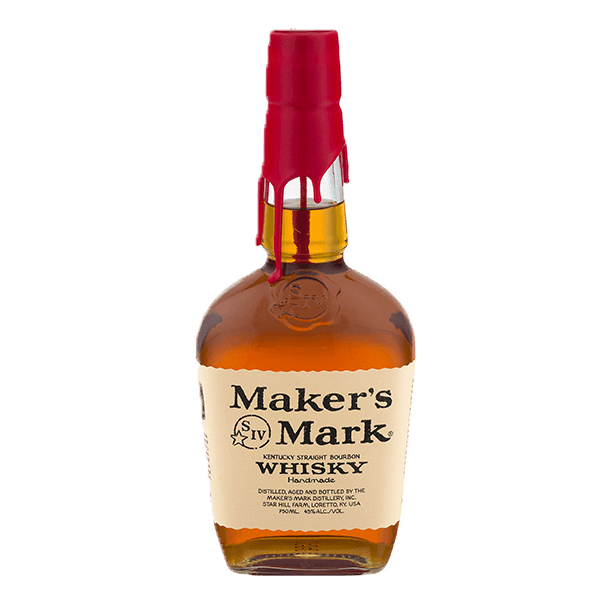
Maker's Mark
Maker's Mark, founded in 1953, is known for its distinctive red wax-sealed bottles and wheat-based bourbon recipe. This Kentucky distillery has become a staple in the bourbon world, offering consistently smooth and approachable whiskeys.
Their flagship Maker's Mark bourbon (90 proof) offers a sweet, balanced profile with notes of caramel and vanilla. In contrast, Maker's 46 (94 proof) introduces more complex oak and spice flavors through its unique finishing process with seared French oak staves.

Buffalo Trace
Buffalo Trace Distillery, with roots dating back to 1773, is one of America's oldest continuously operating distilleries. Known for its wide range of bourbons, the distillery has become a benchmark for quality in the industry.
Buffalo Trace Bourbon (90 proof) presents a well-balanced profile of vanilla, mint, and molasses. Eagle Rare 10 Year Old (90 proof), another popular offering, delivers a more refined taste with notes of orange peel, herbs, and oak due to its extended aging.
Four Roses
Four Roses, established in 1888, stands out for its unique approach of using ten distinct bourbon recipes. The distillery's commitment to quality and consistency has earned it a loyal following among bourbon enthusiasts.
Four Roses Single Barrel (100 proof) showcases rich, spicy flavors with notes of plum and cherry. In comparison, their Small Batch (90 proof) offers a smoother, more mellow experience with hints of spice, fruit, and caramel, making it an excellent entry point for beginners.

Woodford Reserve
Woodford Reserve, produced at Kentucky's oldest distillery site, combines tradition with modern innovation. The brand is known for its scientific approach to bourbon production, resulting in consistently high-quality whiskeys.
Their Distiller's Select (90.4 proof) is a well-balanced bourbon with notes of dried fruit, mint, and cocoa. Woodford Reserve Double Oaked (90.4 proof) undergoes an additional maturation, intensifying the whiskey's character with heightened vanilla and caramel flavors.

Elijah Craig Small Batch Bourbon
Elijah Craig, named after the Baptist preacher credited with inventing bourbon, is a brand steeped in history. Produced by Heaven Hill Distillery, Elijah Craig bourbons are known for their rich flavors and excellent value.
The Small Batch (94 proof) offers a classic bourbon profile with notes of vanilla, caramel, and oak. For those seeking more intensity, Elijah Craig Barrel Proof (varies, typically 120+ proof) delivers a robust, uncut bourbon experience with amplified flavors of the Small Batch.
Final thoughts: Bourbon's taste & aromas
Bourbon's unique flavor profile is a testament to its rich heritage and strict production standards. The interplay of sweet, spicy, and woody notes creates a complex and satisfying drinking experience.
While each bourbon has its own character, the common thread of vanilla, caramel, and oak ties them together. These flavors, derived from the charred oak barrels and corn-based mash, form the backbone of bourbon's distinctive taste.
For those interested in exploring the nuances of American whiskey, our comparison of Kentucky bourbon vs Tennessee whiskey offers further insights. Additionally, our guide to small batch bourbon provides a deeper dive into this premium category.
South African bourbon enthusiasts can explore our curated list of the best bourbons available in South Africa under R750, offering quality options for every palate and budget.
Frequently asked questions about bourbon
Share on social media:
